Complete guide to nectar and pollen plants of Sabalan region with unique ecosystem analysis, flowering calendar and...
Optimize Poultry Ventilation with IoT, AI, and Solar Technologies
Advanced Strategies for Optimizing Poultry Ventilation Using Modern and Data-Driven Technologies
Ventilation in poultry farming plays a role far beyond providing fresh air or cooling the barn; it can serve as a strategic tool to enhance productivity, reduce costs, and ensure poultry health. With advancements in modern technologies such as the Internet of Things (IoT), Artificial Intelligence (AI), and data-driven systems, poultry ventilation management has entered a new era. These technologies enable farmers to monitor and control barn environmental conditions with greater precision, optimize energy consumption, and even predict potential issues to prevent them. In this article, we explore advanced strategies for optimizing ventilation using these technologies and provide practical solutions for their implementation.
Why Do We Need Modern Technologies for Poultry Ventilation?
Modern poultry farms face numerous challenges: unpredictable weather changes, rising energy costs, stricter standards for animal health and welfare, and the pressure to produce more with fewer resources. Traditional ventilation management methods, which often rely on manual adjustments or simple timers, are no longer sufficient to address these challenges. For instance, a basic timer cannot respond to sudden changes in outdoor temperature or a rapid increase in humidity caused by poultry activity. This is where modern technologies come into play.
Advanced technologies, such as smart and data-driven systems, can monitor barn environmental conditions in real time and automatically apply necessary adjustments. These systems not only increase precision but also reduce human intervention, minimizing errors and saving farmers time and energy. Furthermore, these technologies can analyze historical data and identify patterns that help improve future decision-making.
1. Using the Internet of Things (IoT) for Smart Ventilation Monitoring and Control
The Internet of Things (IoT) refers to a network of devices and sensors connected via the internet, capable of collecting, transmitting, and analyzing data. In poultry farming, this technology can revolutionize ventilation management. By installing IoT sensors throughout the barn, data such as temperature, humidity, levels of harmful gases (like carbon dioxide or methane), and airflow speed can be collected in real time.
Benefits of Using IoT in Poultry Ventilation
- Real-Time Monitoring: IoT sensors can continuously collect data and make it available to farmers through a mobile app or online dashboard. This allows you to stay informed about the barn’s conditions at all times, even if you’re not on-site.
- Automatic Control: IoT systems can be connected to smart controllers that automatically adjust fans, vents, and cooling systems based on the data received. For example, if the temperature exceeds a certain threshold, the system can automatically increase the number of active fans.
- Rapid Alerts: In case of issues, such as a sudden increase in harmful gas levels or a fan malfunction, the system can immediately send alerts via SMS or email to the farmer.
- Data Analysis: The data collected by sensors can be stored and used for future analysis. This data can reveal specific patterns, such as the times of day when temperatures typically rise or the factors contributing to increased humidity.
How to Implement IoT in Poultry Farming
To get started, you can begin by installing a few simple sensors at key points in the barn. These sensors should measure temperature, humidity, and gas levels. Then, connect these sensors to a central system that collects and analyzes the data. Finally, choose an app or dashboard to access this data and control the system. Many agricultural technology (AgriTech) companies offer ready-made packages for this purpose, which are easy to install and use.
2. Leveraging Artificial Intelligence (AI) for Predictive and Optimized Ventilation
Artificial Intelligence (AI) can act as the brain of your ventilation system. Using machine learning algorithms, this technology can identify complex patterns in environmental data and provide predictions for the future. For example, AI can predict when temperatures might reach critical levels based on weather forecasts and current barn conditions, allowing the system to apply necessary adjustments in advance.
Applications of AI in Poultry Ventilation
- Predicting Environmental Changes: AI can analyze weather data and historical barn data to predict changes in temperature or humidity, preparing the ventilation system to respond accordingly.
- Optimizing Energy Consumption: AI algorithms can analyze energy usage patterns to determine the best times to activate fans or cooling systems, minimizing electricity consumption.
- Detecting Issues: AI can identify unusual patterns, such as a fan suddenly consuming more energy, which may indicate a malfunction.
- Personalized Settings: Every poultry farm has unique conditions, such as the number of birds, barn size, or regional climate. AI can learn from your specific barn data and optimize ventilation settings accordingly.
How to Implement AI
Implementing AI typically requires collaboration with technology companies that offer AI platforms for agriculture. These companies often provide a system that includes sensors, data analysis software, and AI algorithms. You can start by collecting initial data (e.g., temperature and humidity data from the past few months) and feeding it into the system for the algorithms to learn. After a few weeks or months, the system can provide accurate predictions and recommendations.
3. Using Solar-Powered Ventilation Systems for Sustainability and Cost Reduction
One of the biggest challenges in poultry farming is the high energy cost of ventilation systems. Fans, cooling systems, and other ventilation equipment often account for a significant portion of the electricity bill. Using solar-powered ventilation systems can be a sustainable and cost-effective solution to reduce these expenses.
Benefits of Solar-Powered Ventilation Systems
- Reduced Energy Costs: By using solar energy, you can decrease reliance on the grid and significantly lower your electricity bills.
- Environmental Sustainability: Solar energy is a clean energy source that reduces greenhouse gas emissions, contributing to environmental sustainability.
- Reliability: In areas prone to power outages, solar systems can serve as a backup energy source, preventing ventilation system interruptions.
How to Implement Solar-Powered Ventilation Systems
To get started, install solar panels on the barn roof or in a nearby area with sufficient sunlight. These panels will generate the electricity needed to power fans and other ventilation equipment. To ensure continuous operation (e.g., at night or on cloudy days), you can use energy storage batteries. It’s also advisable to consult a solar energy specialist to calculate the system capacity based on your barn’s needs.
4. Designing Modular Ventilation Systems for Greater Flexibility
Modular ventilation systems refer to systems designed with separate, interchangeable components that can be easily expanded or modified. These systems are ideal for poultry farms that may need to adapt or expand in the future.
Benefits of Modular Ventilation Systems
- Flexibility: If the number of birds or the size of your barn increases in the future, you can easily add new modules (e.g., additional fans or vents) to the system.
- Easy Maintenance: If a module fails, you can repair or replace just that component without disrupting the entire system.
- Lower Long-Term Costs: Instead of replacing the entire ventilation system in the future, you can keep it up to date by adding or modifying modules.
How to Design a Modular Ventilation System
To design a modular system, first assess your current and future barn needs. Then, design the system with detachable components, such as fans that can be easily added or vents that can be repositioned. It’s best to collaborate with a ventilation engineer or a specialized company to design a system tailored to your needs.
5. Using Analytical Dashboards for Better Decision-Making
One of the greatest advantages of data-driven technologies is the ability to use analytical dashboards. These dashboards can visually display data collected from sensors, helping you make better decisions.
Features of Analytical Dashboards
- Visual Data Display: You can view charts showing changes in temperature, humidity, or energy consumption over time.
- Pattern Analysis: Dashboards can identify specific patterns, such as which days have higher energy consumption or what factors contribute to temperature increases.
- Practical Recommendations: Some dashboards can provide suggestions for improving ventilation based on the data, such as increasing the number of active fans during the hottest hours of the day.
How to Use Analytical Dashboards
To use dashboards, you first need to install a data monitoring system (e.g., IoT sensors). Then, choose software that offers dashboard visualization capabilities. Many agricultural technology companies provide ready-made dashboards that you can install on your phone or computer and use easily.
6. Training Staff to Use Modern Technologies
One of the key factors for success in adopting modern technologies is proper staff training. If your employees don’t know how to use smart systems or analytical dashboards, these technologies cannot be fully effective.
Strategies for Training Staff
- Conducting Training Workshops: You can ask companies that provide smart ventilation systems to conduct training workshops for your staff.
- Creating Simple Guides: Prepare easy-to-understand manuals with images that explain how to use the systems.
- Ongoing Training: Technologies are constantly evolving, so training should be updated periodically.
7. Integrating Ventilation with Comprehensive Poultry Management Systems
Ventilation systems should not operate in isolation; they should be integrated with other poultry management systems, such as feeding, lighting, and health monitoring systems. This integration can enhance overall system efficiency.
Benefits of System Integration
- Unified Management: By integrating systems, you can control all aspects of poultry farming from a single central dashboard.
- Resource Optimization: For example, if the ventilation system detects high temperatures, it can instruct the lighting system to dim the lights, reducing heat production.
- Improved Poultry Health: Integrated systems can help identify issues more quickly. For instance, if the poultry health system detects signs of illness, the ventilation system can increase fresh air intake.
How to Integrate Systems
For integration, you should use platforms that support connectivity between different systems. Many agricultural technology companies offer comprehensive platforms that can integrate ventilation, feeding, and other aspects. Alternatively, you can work with an IT specialist to coordinate your existing systems.
8. Using Green Technologies to Reduce Environmental Impact
Poultry farms have a significant environmental impact, from high energy consumption to greenhouse gas emissions. Using green technologies in ventilation systems can help mitigate these effects.
Green Solutions for Ventilation
- High-Efficiency Fans: Fans that consume less energy while producing more airflow can reduce environmental impact.
- Recycled Materials: Use recycled materials to manufacture ventilation system components (e.g., vents or pads).
- Energy Recovery Systems: Some systems can recover heat generated by poultry and use it to warm the barn during winter.
How to Implement Green Technologies
To get started, you can begin by replacing old fans with energy-efficient models. You can also collaborate with companies that offer green technologies for agriculture, which can provide solutions tailored to your needs.
Conclusion
Adopting modern and data-driven technologies in poultry ventilation management can bring about a major transformation in the industry’s productivity and sustainability. The Internet of Things (IoT) enables real-time monitoring and control, Artificial Intelligence (AI) enhances decision-making through prediction and optimization, and solar and modular systems reduce costs and environmental impact. Analytical dashboards, staff training, and system integration can further improve efficiency and simplify management.
To implement these strategies, it’s best to collaborate with agricultural technology companies and adopt solutions suited to your barn’s needs. While the initial cost of these technologies may be high, they offer significant long-term returns by reducing energy costs, increasing productivity, and improving poultry health. Now is the time to embrace these technologies and elevate your poultry farm to a new level of efficiency and sustainability.
Leave a comment
Log in to post comments
Related posts
 Why does pollen improve your health?
Why does pollen improve your health? 10 Ways to Consume Bee Pollen
10 Ways to Consume Bee Pollen



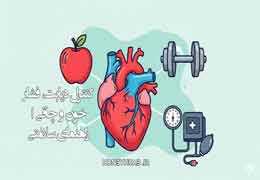
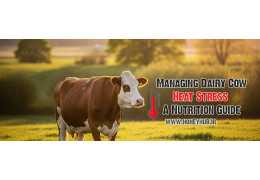


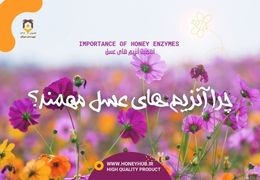


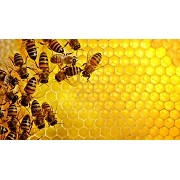
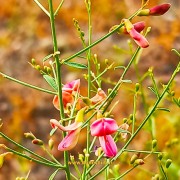
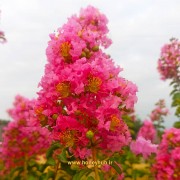
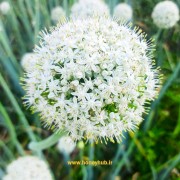

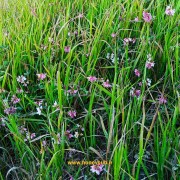



Latest comments